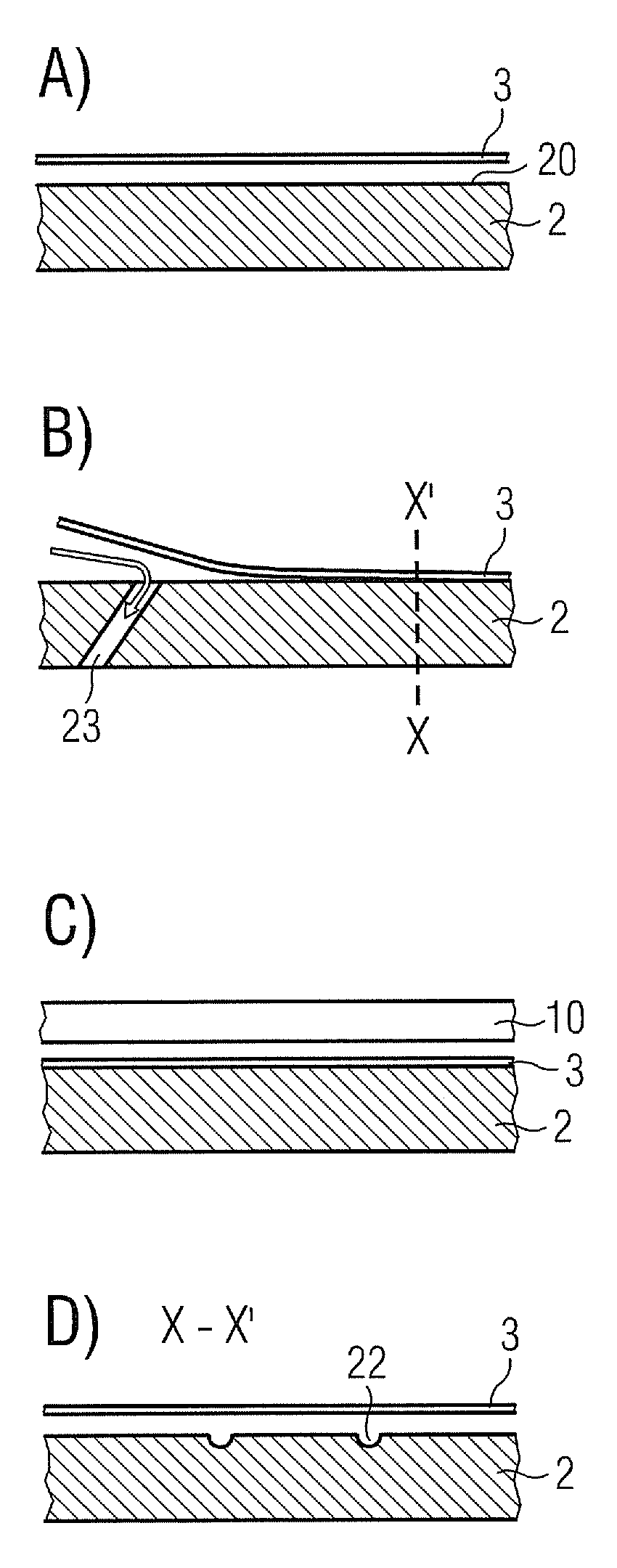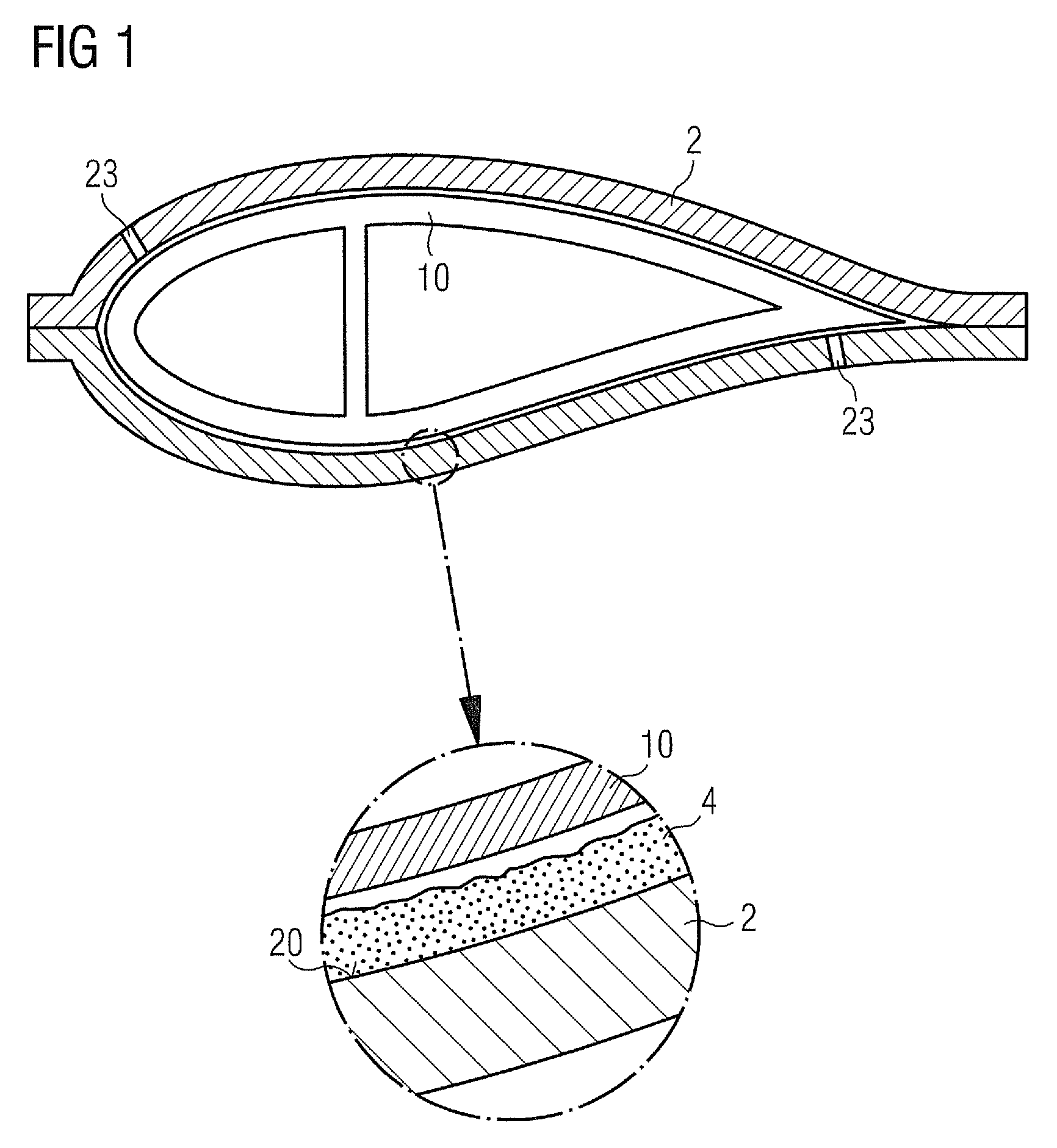Method of moulding a wind turbine blade
a technology of wind turbine blades and moulding methods, which is applied in the manufacture of final products, manufacturing tools, other domestic articles, etc., can solve the problems of easy application of release agents, uneven or dimpled component surfaces, and health hazards to anyone exposed, so as to reduce the ability of other materials to stick, easy to remove, and easy to manufactur
- Summary
- Abstract
- Description
- Claims
- Application Information
AI Technical Summary
Benefits of technology
Problems solved by technology
Method used
Image
Examples
Embodiment Construction
[0027]In the drawings, like reference numbers refer to like objects throughout. Objects in the diagrams are not necessarily drawn to scale.
[0028]FIG. 1 shows a cross-section through a mould 2 with laid-up component layers 10 in a prior art component moulding process such as that described in EP 1 310 351 A1, in which a wind turbine blade is formed of fibre layers 10 and cured in a closed mould 2 into which resin is injected under pressure. Here, the mould 2 comprises nozzles 23 through which air can be extracted during a vacuum extraction step, thus causing the component layers 10 to expand, and by means of which glue or resin is drawn into the component layers 10. To allow the cured wind turbine blade to be removed from the mould 2 without damage to its surface, a layer of release agent 4 such as silicone wax is applied to the inside surfaces 20 of the mould 2, as shown in the enlarged part of the diagram. When removing the cured blade from the mould 2, remnants of the wax 4 can re...
PUM
| Property | Measurement | Unit |
|---|---|---|
| thickness | aaaaa | aaaaa |
| thickness | aaaaa | aaaaa |
| thickness | aaaaa | aaaaa |
Abstract
Description
Claims
Application Information
 Login to View More
Login to View More - R&D
- Intellectual Property
- Life Sciences
- Materials
- Tech Scout
- Unparalleled Data Quality
- Higher Quality Content
- 60% Fewer Hallucinations
Browse by: Latest US Patents, China's latest patents, Technical Efficacy Thesaurus, Application Domain, Technology Topic, Popular Technical Reports.
© 2025 PatSnap. All rights reserved.Legal|Privacy policy|Modern Slavery Act Transparency Statement|Sitemap|About US| Contact US: help@patsnap.com



